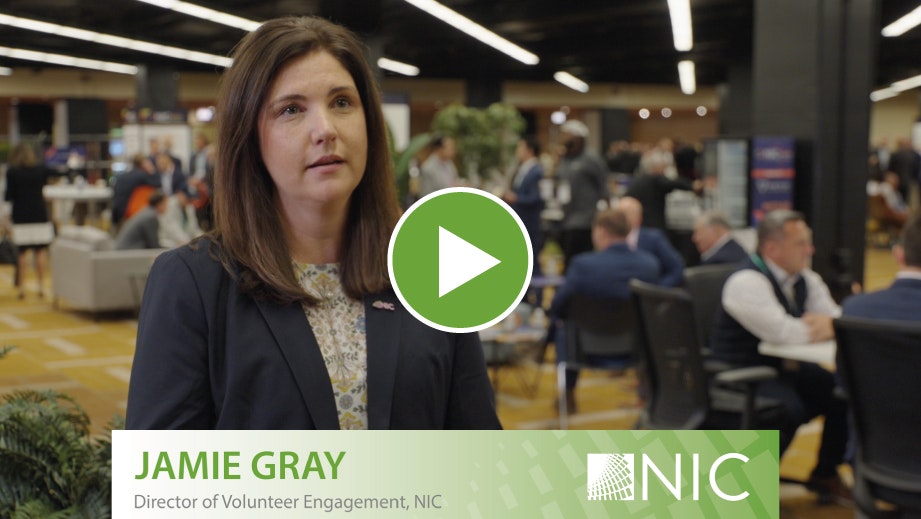Inside the December Issue
In this edition of the NIC Insider, learn about the forces influencing the future of skilled nursing, and why Phil Fogg, CEO of Marquis Companies, believes there is benefit to providers taking on risk. NIC Senior Advisor Beth Mace highlights 2023 key market forces and what to expect heading into 2024. Are you aware of all the research reports and analyses published and sponsored by NIC this year? Lisa McCracken offers a recap. Demographics validate the need for affordable middle market options, and Future Leaders Council member Andrew Katzman explains why creativity is key. And get to know Director of Volunteer Engagement, Jamie Gray, and how she is working to enhance volunteer engagement at NIC.
Stayed tuned for a new NIC Insider newsletter, launching in early 2024!
Navigating the Current Skilled Nursing Environment - Phil Fogg, Jr. offers expert perspective in keynote address.

The skilled nursing sector faces both headwinds and tailwinds as it continues to grapple with operational challenges while also presenting real opportunities for growth.
The ongoing fallout from the pandemic, staffing shortages, managed care expansion, an aging building stock, and regulatory changes have slowed growth. But the favorable demographics of a quickly aging population and the sector’s indispensable place in the healthcare continuum make it an appealing opportunity for providers and investors alike.
“These forces are influencing our future,” said Phil Fogg, Jr., CEO at Marquis Companies, Milwaukie, Oregon. “Sometimes these forces are threats, and sometimes they are opportunities, and sometimes they’re both.”
Fogg presented his keen insights on skilled nursing during his keynote address at the 2023 NIC Fall Conference, held Oct. 23-25 in Chicago. His company offers skilled nursing, independent and assisted living, home health, hospice care, and other services. He is also the immediate past chair of the Board of Directors at the American Health Care Association (AHCA).
The well-attended session was moderated by Stephen Monroe, editor at large, Irving Levin Associates, LLC.
A big headwind for the industry is the workforce. “It’s the number one thing that will affect our quality and our occupancies,” said Fogg.
A June 2023 survey by the AHCA and the National Center for Assisted Living (NCAL) showed that 55% of nursing homes are turning away prospective residents and patients due to labor shortages.
To address the issue, Fogg divides the workforce into buckets: the professional staff (nurses, doctors, therapists, etc.), and the nonprofessional staff.
The nonprofessional staff is coming back to work and will continue to do so, he said. The bigger problem is the professional staff. The industry was already anticipating a shortage of these workers prior to the pandemic because of the growing demographic wave of older people.
Monroe suggested that more immigration would help ease the bottleneck.
Fogg agreed. During the Covid-19 emergency, approved visas for foreign professionals, many of whom were healthcare workers, dropped from 1.2 million annually to 600,000. “We cut in half the number of foreign workers that we brought into the United States,” said Fogg.
Other factors are at play. Processing has slowed of green cards, which grant foreign nationals authorization to live and work in the United Staes permanently. Also, the U.S. education system is not increasing the supply of healthcare professionals fast enough to meet demand in the years to come.
An industry coalition is working to win approval of a special foreign healthcare worker visa. “Everybody is on the same page,” said Fogg.
Skilled nursing facilities in rural areas will be the most challenged, Fogg predicted. More than 600 skilled nursing facilities, mostly in rural areas, have closed since the start of the pandemic. “They just couldn’t get the staff,” said Fogg. If the government wants to save rural long-term care, Fogg thinks the government may have to step in with subsidies.
Unfunded staffing mandates such as those being proposed by the government would be a big headwind. Mandates to hire more staff will likely lead to further closures.
Taking on Risk
The conversation shifted to the rapid growth of Medicare Advantage (MA) plans and their impact on the skilled nursing sector. The government’s goal is to have all of the age 65-plus population enrolled in MA plans by 2030.
“We have to increase our negotiating power,” said Fogg. He explained that skilled nursing providers must join together to get higher payments from Medicare, Medicaid and MA plans in a way that is compliant with anti-trust laws.
Providers also need to compete on quality measures and value-based care payment provisions. Fogg’s company launched an Institutional Special Needs Plan (I-SNP) to manage its own risk and share in the savings, a potential tailwind.
Aging physical plants represent a headwind. While the inventory of skilled beds is decreasing, demand is expected to increase.
Many nursing homes were constructed in the ‘60s and early ‘70s. An August report by the AHCA /NCAL shows that only three new nursing homes opened in 2023, compared to an average of 64 each year between 2020 and 2022.
As an alternative, Fogg predicts that states will divert more residents to other settings. He foresees a situation where an assisted living community would convert 20 rooms to a skilled nursing unit with services brought in by outside providers.
An overall reduction in skilled nursing capacity could be a tailwind. Hospitals will still need somewhere to place patients which will likely create a push to raise payments for nursing care providers. “In three to five years, we are going to see an increase in our negotiating power with MA plans, Medicare and Medicaid,” said Fogg.
Predictive artificial intelligence will be a game changer for population health management. Electronic health records will be mined for data to predict changes in patient condition or the risk of a hospital admission. Also, remote patient monitoring will help make the staff more efficient and help ease worker shortages.
Despite the headwinds facing the industry, skilled nursing properties have continued to sell at higher and higher prices. “It’s befuddling,” said Monroe.
Investors and providers with a population health strategy—such as a special needs plan—could generate more payments through quality incentives, according to Fogg. “The ability and willingness to take risk is a part of the business model,” he said.
Fogg remains optimistic about the five-year outlook for the skilled nursing sector, but he said it will depend on increasing the supply of workers through immigration reform and a change in the U.S. education system to fill the gap. That should increase occupancies. He also thinks skilled nursing providers will have more negotiating power to secure higher payment rates. Also, he concluded, “Providers need to own their own risk and stop letting third parties monetize the savings.”
Flashing Yellow: A Slow Turn Ahead
By: Beth Mace, Senior Advisor, NIC
November 27, 2023
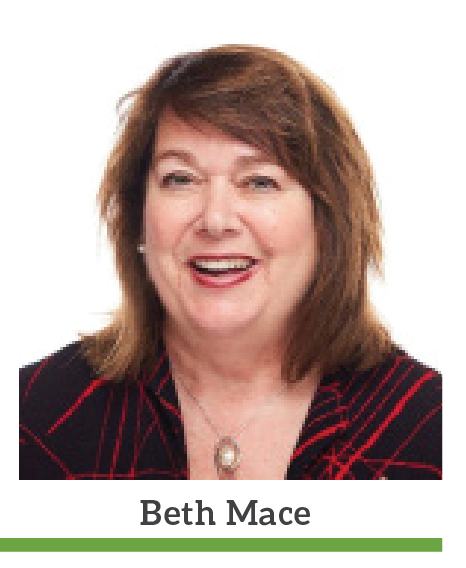 One of the most compelling things about being an economist and a bit of a numbers’ nerd is that the world and the data reporting on the world are always changing. Every day new bits of information are released by the Federal government, new observations from purveyors of current events are disseminated, and anecdotal interpretations by analysts paint an ever-evolving picture of our daily events. Never a dull moment, as they say.
One of the most compelling things about being an economist and a bit of a numbers’ nerd is that the world and the data reporting on the world are always changing. Every day new bits of information are released by the Federal government, new observations from purveyors of current events are disseminated, and anecdotal interpretations by analysts paint an ever-evolving picture of our daily events. Never a dull moment, as they say.
Since the last article that I wrote in the November NIC Insider, new data points have been revealed. The view on the economy’s strengths and weaknesses, the outlook for the capital markets, and the assessment of senior housing market fundamentals as well as pricing and valuation trends have changed. As a result, and as the year winds to an end, a clearer window into market conditions in 2024 exists. This article will highlight some key observations from 2023 and how these will influence 2024.
Senior Housing Market Fundamentals. For senior housing stakeholders, 2023 shaped up to be a strong year in terms of market fundamentals. Through the third quarter, data from NIC MAP Vision shows that demand for senior housing was strong. In fact, there has never been as many older adults living in senior housing. At the same time, inventory growth has been relatively modest, compared with historical trends. As a result, occupancy rates have risen and are nearly back at pre-pandemic levels. This is especially the case in NIC MAP Vision’s 58 Secondary Markets. The recovery in need-based assisted living has been stronger than independent living because demand has been stronger and there was more room to make progress, but nevertheless, the occupancy rates for independent living were higher at 86.1% versus 82.6% for assisted living in the third quarter because occupancy rates for independent living did not fall as sharply during the pandemic as those for assisted living did.
Based on these trends, it’s likely that the occupancy rate for senior housing will fully recover to pre-pandemic levels in 2024. While this recovery will not bring it back to all-time peak levels, the outlook for market fundamentals remains bright. Limited development pipelines, hampered by the high cost of construction financing, will provide a positive tailwind for further occupancy improvements in the coming year. Further, the value proposition of senior housing—security, socialization, engagement, room and board, care coordination, and lifestyle—remains in place and will attract new residents and their adult-child influencers to senior housing properties, supporting additional demand.

The Economy. On the surface, the U.S. economy has been surprisingly resilient. Inflation-adjusted GDP clocked in at 4.9% in the third quarter, the jobless rate remains near a 50-year low of 3.9%, and more than 200,000 jobs were created on average in the three months ending in October. However, there remains a disconnect between these relatively robust data points and consumer attitudes. The November consumer confidence index reported by the University of Michigan fell to its lowest level in a year as consumers remain concerned about inflation, high interest rates, gridlock in Washington, events in the Middle East and Ukraine, and the stock market. Paychecks seemingly go less far than a year ago.
Meanwhile, the Federal Reserve is likely feeling pretty good about its progress in fighting inflation. Consumer prices as measured by the CPI increased 3.2% from year-earlier levels in October, down sharply from the 7.7% pace seen in October 2022. For the Fed, the need to reduce inflation to a 2% rate is paramount, however, and further progress is needed.
Thus far, so-called flexible price or goods inflation has fallen sharply, reflecting the disappearance of pandemic-related supply chain bottlenecks. Tracked by the Federal Reserve Bank of Atlanta, sticky price inflation, comprised of services, shelter costs, medical costs, and other services, may be more intractable and less easy to reduce. In October, sticky price inflation was up 4.9% from year-earlier levels, while the flexible component on the inflation measure fell 0.3%.
Fed Policy and Interest Rates. With inflation top of mind for the Fed and the perceived policy need to get inflation back to its targeted 2% range, the Fed has raised interest rates 11 times since March 2022 to a current range of 5.25% to 5.5%. It has not changed rates in the past two FOMC meetings or since July 2023, however, as it carefully watches current indicators of economic performance and inflation.
While few believed that the Fed could orchestrate a so-called “soft landing” in the economy, where overall activity decelerated without a recession, many prognosticators are now anticipating that the U.S. economy may in fact avoid a recession entirely. In fact, a new phrase has recently appeared in the lexicon — “immaculate disinflation.” Defined in the New York Times as “the near miraculous outcome in which the Federal Reserve manages to bring down inflation without plunging the economy into recession.”
Typically, the speed and size of the rate hikes orchestrated by the Fed since March 2022 would sap the strength of the economy and push it into a recession, thereby reducing demand and lowering upward pressure on prices. Thus far, 20 months since the beginning of monetary tightening, a recession has not occurred. Most recent statistics show a slowing economy, but not one on the precipice of recession.
A likely deceleration in consumer spending in the coming months due to the resumption of student loan payments and reduced savings will lead to slower overall economic activity since consumption makes up two-thirds of overall economic activity in the U.S. This and a further moderation of inflation will be very welcomed by the Fed and will likely allow it to hold policy steady at least in the near term.
A Turning Point. By next year, however, many analysts as well as the fixed income markets increasingly believe that the Fed will lower interest rates. In fact, FOMC projections from late September show that FOMC voting members anticipate that the Fed Funds rate will end the year at 5.1% in 2024, down from 5.6% in 2023, before falling further to 3.9% in 2025. The market puts the odds of a rate reduction as soon as spring of 2024.
Should this happen, this would be the spark that would re-invigorate the commercial real estate market.

Commercial Real Estate. As one of the most interest-rate sensitive sectors of the economy, commercial real estate has been hamstrung by the significant and rapid ascent of interest rates. Transactions activity has slowed sharply, prices have fallen, cap rates have risen, and property valuations have dropped.
And now, more than a year into it, a new reality is setting in. Buyers and sellers have capitulated on a new “normal” and recognize that the days of very low financing options are gone. As a result, there are signs of a gradual improvement in deal flow. Some of this reflects the needs of closed-end equity funds to sell assets and recycle cash back to their clients. In other instances, property owners with maturing debt need to either refinance at higher rates with lower proceeds and pay down debt or sell properties. And in some instances, these circumstances and/or poor property performance will force sales, with a wave of distressed assets coming into the market.

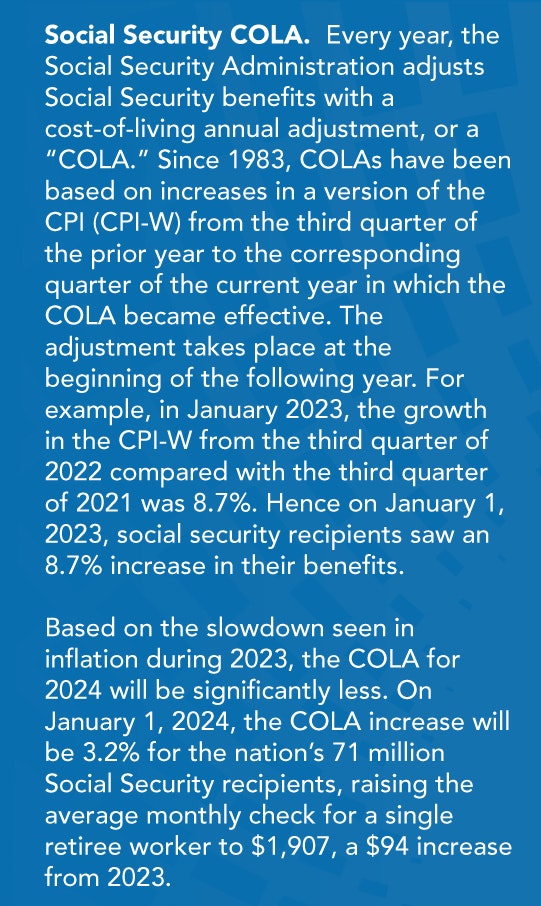 As all of this will take time to pan out. As these trends compound, deal activity should pick up in 2024 and beyond. However, it will not be a quick bounce back. As Green Street wrote in its mid-November Heard on the Beach article: “To Survive Till ’25, Don’t Snore in ’24.”
As all of this will take time to pan out. As these trends compound, deal activity should pick up in 2024 and beyond. However, it will not be a quick bounce back. As Green Street wrote in its mid-November Heard on the Beach article: “To Survive Till ’25, Don’t Snore in ’24.”
Senior Housing. Like other property types, sales transaction volume in senior housing has slowed sharply as uncertainty and the rapid rise in interest rates have taken root. Closed volume in the third quarter totaled $546 million based on preliminary data, and year-to-date, it totaled $2.9 billion, according to NIC MAP Vision. By comparison, it was $5 billion for the same period in 2022. Pricing has also weakened sharply. Per unit pricing for senior housing averaged $119,000 in the third quarter, down 34% from year-earlier levels. Valuations are down and cap rates are up by 75 to 125 basis points in the past year by some estimates for senior housing.
Further challenges exist. There are an estimated $16 billion of loans maturing in the senior housing and care sector in the next two years according to estimates provided by Cushman & Wakefield. Many of these are adjustable-rate mortgages, which will correct to significantly higher rates and will often require a protective interest rate cap as well.
Additionally, twenty-seven percent of the senior housing properties tracked by NIC MAP Vision in the 31 Primary Markets had occupancy rates below 80% in the third quarter, potentially making debt service coverage challenging, for example.
As 2023 has unfolded, many banks are becoming increasingly limited in their ability to accommodate their borrowers as performance metrics do not meet loan covenants. Loan losses are starting to be realized and further loan losses will be recognized in 2024. As this happens, it’s likely that a wave of properties will be sold as distressed assets.
And while regulators have indicated that banks should work with their borrowers, this may become more problematic in 2024. In many instances banks need to recycle capital before they can make new loans, or said another way, there may simply be a limited amount of capital availability from which to lend. That said, the senior housing industry, much like multifamily industry, has the GSEs (government-sponsored enterprises) as a source of capital. And just recently, the Federal Housing Finance Agency (FHFA), the regulator of Fannie Mae and Freddie Mac, announced a new capital allocation of $70 billion each to each of these GSEs.
For senior housing, the effects of selling distressed assets to new operators needs to be carefully executed to preserve the resident experience. And the number of operators who have the means, capability, and capital structure to take on new assets may be limited.
While operator capacity and capability are a challenge in the near term, it’s also a longer-term consideration for the industry. Going forward, demand projections through 2030 suggest as many as 100,000 new units per year will need to be developed to meet demand. Notably and importantly, physical property development is simply the first stage of meeting the future demand for senior housing. Strong and well capitalized operators to manage the properties and fulfill the value proposition offered by senior housing are needed as well.
As always, I appreciate and welcome your comments, thoughts, and feedback.

2023 NIC Research & Analytics Recap: We have been busy!
By: Lisa McCracken, Head of Research and Analytics, NIC
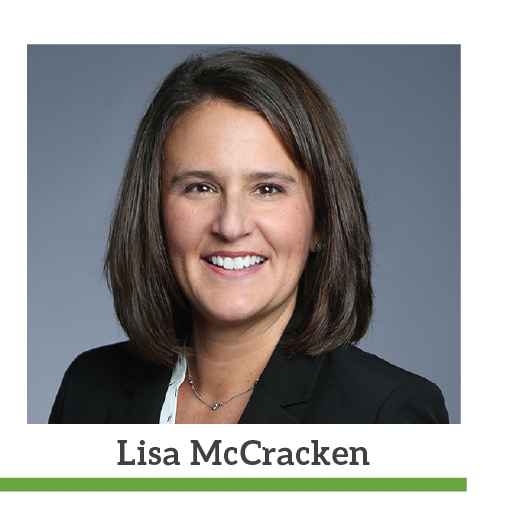 The NIC team has been busy at many levels across the past 12 months, and to wrap up 2023, we thought it would be helpful to recap some of our largest and most commonly utilized research reports and analyses from the past year. Each year, NIC aims to bring forth actionable insights that are essential to leading the evolution of housing and care for older adults, and we hope you find this recap helpful.
The NIC team has been busy at many levels across the past 12 months, and to wrap up 2023, we thought it would be helpful to recap some of our largest and most commonly utilized research reports and analyses from the past year. Each year, NIC aims to bring forth actionable insights that are essential to leading the evolution of housing and care for older adults, and we hope you find this recap helpful.
NIC Strategic Plan Focus Areas
In 2022, the NIC Board of Directors adopted and released a five-year strategic plan for the organization. The strategic plan outlined five key areas of focus: Active Adult, AgeTech, Middle Market, Partnering for Health, and Capital for Operations. In-turn, the NIC Research and Analytics team has been working to align thought leadership and research projects with these five key focus areas.
- Case Studies: In the fall of 2023, three case studies were released, two focusing on Middle Market examples and one that falls under the Partnering for Health umbrella. Those three are noted below. Stay tuned for additional case studies to be released each month throughout 2024.
- Middle Market: Read about how Opus Newton by 2Life Communities and Truewood by Merrill Gardens have approached developing and transitioning existing housing stock to meet the needs of the middle-income older adult. Each organization has taken a slightly different approach, which brings forth more options for the sector to consider as others expand into middle-market options.
- Partnering for Health: Masonicare, based in Wallingford, CT, transitioned a portion of an oversized nursing home into inpatient geriatric mental health hospital as part of an overall downsizing plan. There was significant demand for such services in the market area and area hospital partners as well, as state agencies were supportive of this growth strategy. Read the full case study to understand specific build-out costs, reimbursement rates, and enhanced revenue brought about by this strategic move.
Insights from the Data
The NIC Analytics team delves into the data housed within the NIC MAP Vision platform and produces a series of ongoing reports as well as timely research pieces on key topics to provide actionable insights on what the data means.
- Introduction of the AIV Ratio: In the August edition of the NIC Insider newsletter, we released a new ratio created by the NIC Analytics team called the absorption-to-inventory velocity (AIV) metric. This ratio serves as an indicator of how effectively the market absorbs or leases newly supplied units on a net basis. Stay tuned for more on the AIV ratio and other advanced metrics in 2024.
- Intra-Quarterly Snapshot Reports: Outside of the quarterly data release, there is value in understanding the occupancy and inventory growth trajectory more frequently. These monthly snapshot reports show the ongoing recovery since the onset of the pandemic as well as the impact of recent economic and rate conditions.
- Skilled Nursing Data Report: For several years, NIC and NIC MAP Vision have had an initiative to bring forth key measures important to skilled nursing owners and operators including occupancy and changes over time in payor mix. Reports have offered monthly data insights.
- Ad-Hoc Reports: NIC Analytics published reports throughout the year drawing insights from available industry data. Some of our more popular pieces included CCRC performance trends, a deep dive on memory care, and active adult inventory and penetration rates.
NIC-Sponsored Research
NIC has a long history of partnering with respected and influential research institutions to fund groundbreaking research to advance important issues for senior housing and care. With some of the esteemed partners like those below, NIC is able to serve a broader audience and have an elevated voice at the national and global level for the sector.
- NORC at the University of Chicago: NIC first partnered with NORC on the groundbreaking 2019 “Forgotten Middle” research. This past year, NIC kicked off a multi-part series of studies with NORC. The NORC research showed that the frailty of older adults living within a senior housing and care setting declines after roughly 90 days compared to similar peers living in the greater community. In 2024, we will release research on longevity and outcomes in senior housing and care settings. These results have the potential to revolutionize the sector. Read here for a summary of the 2023 frailty study.
- Harvard Joint Center for Housing Studies: As part of the annual Housing America’s Older Adults, led by Harvard, NIC sponsored a specific component of the report to look at middle-market affordability for care in the home versus assisted living. Click here to access the full report.
- Milken Institute: In early January, the Milken Institute will release a report that recaps work led by the Milken Institute Financial Innovations Lab and supported by NIC throughout 2023 to develop viable solutions to grow and scale middle-market housing and care for older adults. Additionally, in early November of this year, NIC awarded $3M to the Milken Institute to establish a groundbreaking Aging Innovation Collaborative. Click here to read more about this award and the exciting plans ahead for the Collaborative.
NIC Proprietary Research
Last, but not least, is the ongoing work that NIC does to serve core operations and advance access, choice and thought leadership for investors and providers. Below are some of the additional ways that we go about fulfilling that mission.
- Executive Survey Insights: Started during the COVID-19 pandemic, these surveys have been helpful in taking the pulse of the sector across important topics. This survey mechanism will be brought back again in 2024 with a new brand, NIC Polls, and will feature brief, pointed survey results driven by hot topics voiced from the field.
- NIC Lending Trends Report: NIC collects data from debt providers active in the senior housing and care industry, via a quarterly survey, offering a unique spotlight on capital market conditions.
- NIC Chats Podcasts: NIC has regularly spotlighted industry partners and related experts to bring ideas and inspiration to the field on important topics. NIC has released a series of podcasts, most recently featuring a conversation between NIC’s Beth Mace and Zach Bowyer with Cushman and Wakefield on the current and forecasted market conditions.
- NIC Notes Blog and NIC Insider Newsletter: Throughout 2023, these write-ups have included pieces from guest columnists, write-ups on NIC sponsored research, conference recap articles, and summaries on hot topics such as projections for full occupancy recovery back to pre-pandemic levels. We encourage readers to scroll through these topics and download articles and pieces of interest for their organization.
We look forward to bringing you a robust pipeline of research publications and meaningful industry thought leadership as we move into 2024. This information will be delivered through newsletter communications, social media, live webinars and NIC Conferences, including the NIC Spring Conference being held March 5-7, 2024, in Dallas. As always, we welcome suggestions on how to improve our research and produce the most meaningful information for the various industry stakeholders. Additionally, if it is helpful for a member of our Research & Analytics team to spend time speaking with your audience to share insights on industry topics, we welcome those opportunities.
Get to Know Jamie Gray
Recently, NIC announced the appointment of Jamie Gray as its Director of Volunteer Engagement, which is a newly created position for NIC. Gray will oversee NIC’s volunteer relations to help achieve its strategic objective to enhance volunteer engagement. She will develop programs to recruit, onboard, and integrate new volunteers, and build a robust system of training, support, and stewardship to support staff’s work to maximize the talents and contributions of NIC volunteers.
The NIC Insider spoke with Gray during the 2023 NIC Fall Conference in Chicago to learn more about her new role, how her background and prior experience support the role, what excites her about the future of senior housing and care, and how to get involved with NIC. Hear what Gray had to say…
Middle Market Creativity – Creating a Product for the Forgotten Middle
By: Andrew Katzman, Vice President, Columbia Pacific Advisors
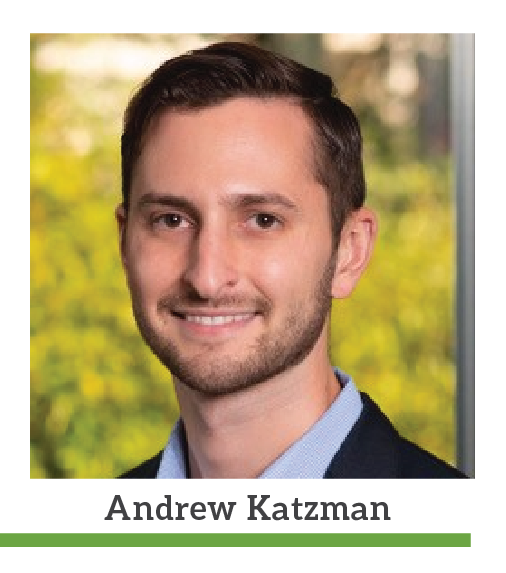 If you work in the senior housing industry, you have undoubtedly had a conversation with a friend/family member/stranger about the “age wave” – the wave of over 50 million baby boomers (generally defined as those people born between 1946-1964) in the United States who are beginning to reach retirement age. Currently, 17.7% of the population is 65 or older. By the year 2040, the resulting demographic shift is expected to more than double the number of people age 85 and up—the age range which most often requires assistance and care.
If you work in the senior housing industry, you have undoubtedly had a conversation with a friend/family member/stranger about the “age wave” – the wave of over 50 million baby boomers (generally defined as those people born between 1946-1964) in the United States who are beginning to reach retirement age. Currently, 17.7% of the population is 65 or older. By the year 2040, the resulting demographic shift is expected to more than double the number of people age 85 and up—the age range which most often requires assistance and care.

If the senior housing industry is to meet this projected surge in demand with a product that meets consumer expectations, then it must understand the needs and wants of the 65+ cohort.
Baby boomers grew up in a very different environment than their parents – they did not suffer through the great depression or a world war. This means that they have different expectations about not just how long they will live, but also how well they will live. This mindset shift has translated into a push for wellness in aging as well as a diversity of engaging activities. According to the US Labor Department survey of consumer expenditures, Americans ages 65 and up accounted for 22% of spending, which is the highest share since records began in 1972. These high spending propensities may have been exacerbated due to lingering psychological effects of the COVID-19 pandemic, but they demonstrate the immense impact that the 65+ demographic has on the economy.
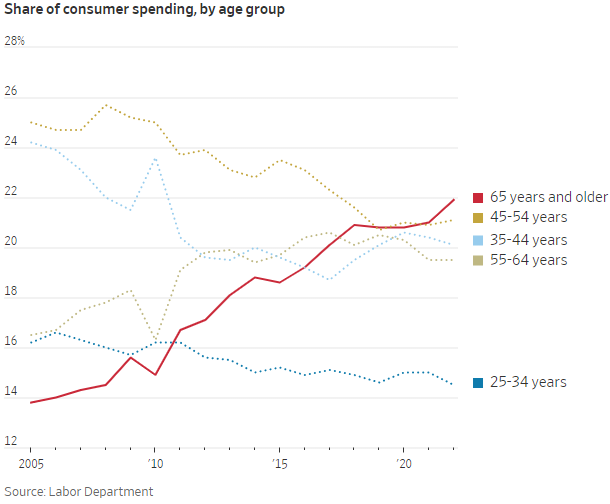
The number of people aged 85+ doubling over the next 20 years should translate to a comparable increase in the number of people who require care and who can afford the associated costs. Within this cohort is a subgroup of older adults who cannot afford traditional private pay seniors housing and do not qualify for public programs – this affordability gap is what is considered the ‘middle-market.’
The senior housing industry’s push to provide a product which satisfies the 65+ cohorts desire to live better longer while remaining affordable to residents and investor alike has created a need for creativity as the previous private-pay model is under tremendous stress in the current environment.
The challenges with creating a middle market product:
- Labor costs
o Staffing is the largest operational cost center at senior housing communities. In addition to competition in the labor market and the costs associated with finding and retaining staff, wages have increased significantly in the last few years.
o Recruiting staff, training, and retention are expensive but are integral to running a successful senior housing operating business. Competition for both skilled and unskilled staff has added to the staffing challenges. The Bureau of Labor Statistics projects that there will be a shortage of almost 200,000 nurses by 2031, and that the number of openings for home health aides and personal aides will increase 37% by 2028.
- Technology implementation
o Technology can be a powerful tool in the provision of care but can be costly for an operator to implement – especially in a community which does not have abundant cash flow or access to affordable capital.
- Development costs
o The costs average cost of construction in 2022 was $317,000 per unit, which represents a 17.8% increase from the prior year.
o In 2017, the average cost of construction was $256,000 which is 24% lower than the 2022 average.
o Unit rents continue to increase to account for the significant increase in construction costs.
- Financing issues
o Availability and affordability of debt and equity.
o There are not many (or any) Federal programs for middle-income housing. They exist for multifamily but have not been redesigned for the provision of care in seniors housing projects.
o State and municipal programs are also designed to spur development but are not yet designed for seniors housing.
o Fixed and variable rate debt has gotten significantly more expensive over the past year.
o More equity is required as LTVs have gone down, spreads have increased, and coverage ratios have increased.
Potential solutions to middle market challenges
- Buy distressed assets and renovate.
o As a result of the combined outcomes of the COVID-19 pandemic and the current interest rate environment, there is a unique opportunity to purchase distressed senior housing assets at a significant discount. With a substantial number of senior housing loans maturing in 2024, there could be a unique acquisition environment which would allow capital sources to acquire real estate at a basis which leave ample room for the infusion of value-add capital without having to take on unaffordable debt.
- Technology can help reduce costs associated with providing care.
o By adopting a holistic approach to technology, operating companies can optimize comprehensive resident care.
o Shift towards value-based care
o By shifting to a focus on preventative, value-based care rather than episodic care, operators can achieve lowered costs associated with care and housing costs. In concert with technological implementation, this shift could prove to meaningfully reduce resident and staff turnover.
The need for a middle market senior housing option is apparent. The demographic statistics highlight the increasing demand for an affordable senior housing option for America’s 85+ population. There are ways that we as an industry can provide a middle market product which satisfies the preferences of both residents and investors, but we will have to be creative.
Creativity in acquisitions, financing, the provision of care, and technology are all opportunities for the senior housing industry to evolve – not just to provide a middle market solution, but to also create more opportunities for the industry as a whole.
Sources:
- US Census Bureau https://www.census.gov/content/dam/Census/library/ publications/2020/demo/p25-1144.pdf
- CBRE Construction Costs https://www.cbre.com/insights/reports/2022- seniors-housing-development-costs
- Bureau of Labor Statistics https://www.bls.gov/ooh/healthcare/registered-nurses.htm#tab-6
- 2017 Average Construction Costs
